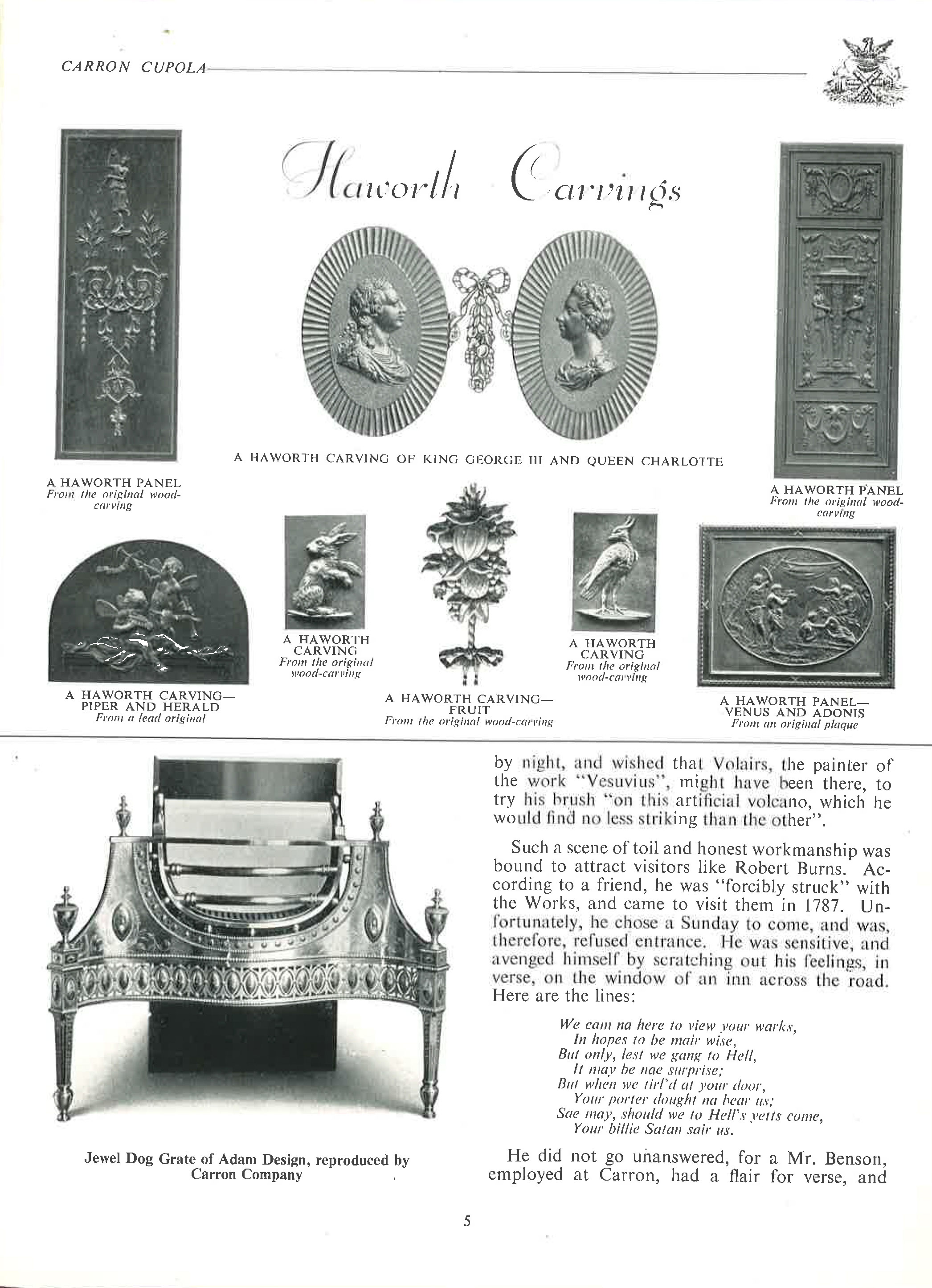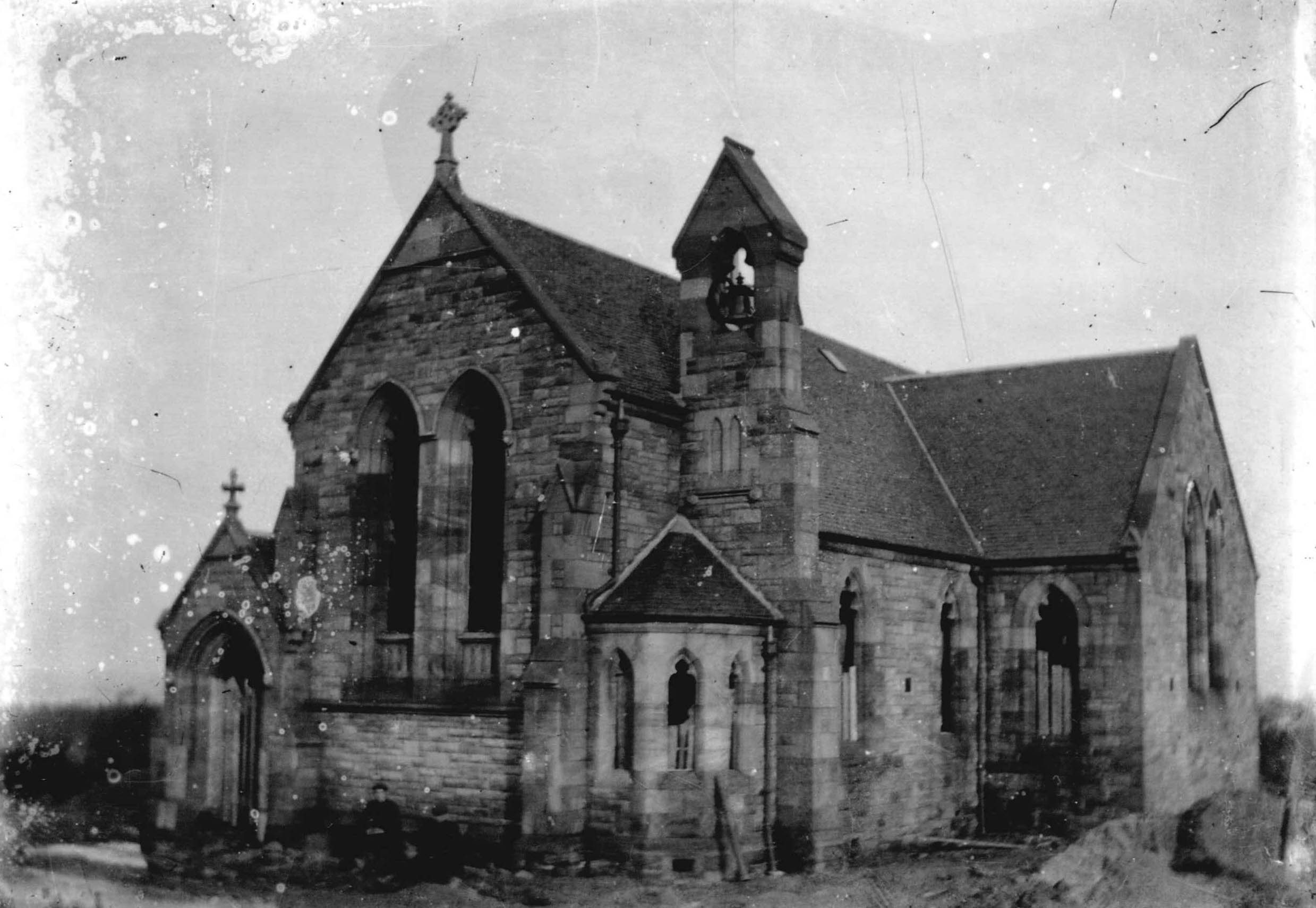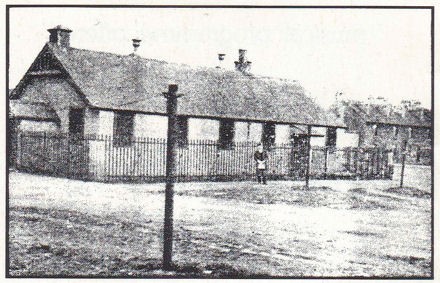This timeline takes you on a journey through the history of the Carron Company.
Of those employees 1,600 were women who produced 6 million 25-pound shells for the war effort.
fields['text']) echo $section->fields['text']; ?>
The timeline
1759 - Carron Company Founded
1760 - The Carron Works goes into operation
By 1761 the Carron works was already providing employment to 615 employees. The early working conditions at the Carron Company were tough. Jacob Pattison, a physician who toured the works, described the works as “insufferably hot” and the state of some of the workers as “truly diabolical” while “most of them seemed half parched.”
1762 - The Carron Friendly Societies began to be established.
The Carron Friendly Society was established to provide security to the company’s bereaved families as well as “to promote friendship and charity upon all occasions, to assist and support each other.” The friendly society continued to develop over the years providing further education.
Late 1700s/Early 1800s - The Carron Company begins to build housing for its workers.
The turn of the century marked progression at Carron. The company built housing for its employees, often to attract skilled workers from England. Many of these workers lived in Forge Row, housing at the time reserved for the company’s most prized employees. The company also housed migrant workers from Ireland in Nailers Row.
1814 - The Napoleonic War marks a period of peak employment at the company. It is estimated that 2,000 workers were employed at Carron at the time.
1832 - The Carron Victualling Society is officially formed.
This was an early form of co-operative that probably pre-dated its official foundation and would have been one of the earliest co-operatives for workers at any company in the British Isles.
1914-1918 - The outbreak of the First World War leads to the Carron works being put under Government control.
This marked the moment that saw women enter onto the factory floor at Carron. Trained in boring and drilling machines, they replaced the workforce that went off to war.
1921 - The Carron Recreation Club is established.
Formed in the aftermath of the First World War the company began to realise the importance of leisure to their employees. They encouraged all manner of activities, including billiards, horticulture, football, a male voice choir and almost everything in between. In addition to the recreation club for employees, Carron also provided playground equipment for the children in West Carron, East Carron, and Stenhousemuir.
1937 - Burder Park is built.
Named after Chairman of Carron at the time, Burder Park opened an ornamental park for its workers and people of the community.
1939-1945 - The Second World War leads once again to government control.
This led to peak employment at the Carron Company, with an estimated 5,000 people taking up employment at Carron during this period. Of those employees 1,600 were women who produced 6 million 25-pound shells for the war effort.
1950-1964 - The Cupola the company’s in-house magazine is published.
1952 - New top end facilities are completed for the Recreation Club.
1959 - Bicentenary of The Carron Company.
1964 - The Carron Company sells off its housing stock.
The Carron housing established at the turn of the 18th Century was sold off, or in some cases used for other purposes by the company. Homes at Dawson Terrace and Carrona Terrace, which were owned by Carron employees, were sold by the company at a more favourable price. West Carron was used for the new state of the art Stainless Steel Plant.
1982 - The Carron Company closes, ending 223 years of one of the World’s most famous ironworks.


By John Mc Morrine for the Hidden Heritage: Lost Villages (Great Place) project.

